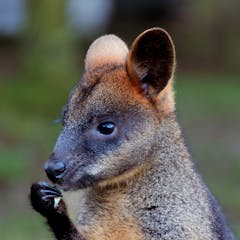
Articles on Herbivores
Displaying all articles

The strategy aims to conserve biodiversity while also contributing to the creation of jobs and economic growth.

Lessons from the Serengeti herds may help conservationists manage migratory herbivore populations.

Each year, hungry plant-eating animals do billions of dollars of damage to valuable plants. We need prevention methods that don’t involve killing them.

Cyclone Idai in Mozambique was an opportunity to test ideas about traits that help animals survive natural hazards.

Carbon credits must be scrutinised – and none more so than credits for taking grazing animals off arid rangelands.

Large pareiasaurs are among the earliest huge plant-eating tetrapods to appear in the history of the development of life on Earth.

These members of the mollusk family may be slow, small and slimy, but they are an indispensable part of the ecosystem.

Africa’s large mammal heritage has formed a deep cultural legacy for all of humankind.

We hear a lot about how humans eating meat is bad for the planet. But if every animal only ate plants, Earth would look dramatically different.

Efforts to preserve biodiversity and slow climate change make natural bedfellows.

It sounds like a mammoth plan, but bringing back large herbivore species to Europe could help mitigate ecosystem collapse.

The recent discovery of fragments of a jaw fossil show that at one point, herbivorous reptiles evolved highly complex and efficient teeth.

The historical record is full of surprises – and it could encourage conservationists to think more creatively.

As Chile’s central mountain region warms, guanacos are wandering into trouble.

An animal’s poop may seem like something to avoid, but it’s full of information about the creature that left it there.

A new analysis of an extinct giant kangaroo skull suggests it was adapted to eat tough, woody material - a feeding style not found in any modern marsupials.

In large ecosystems, managing elephant populations so they don’t exceed a certain threshold number is arbitrary.

The focus of CITES is not solely on the protection of species. It also promotes controlled trade that is not detrimental to the sustainability of wild species.
